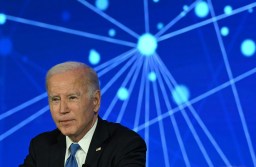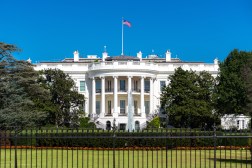President’s budget calls for 25 more digital services teams
Editor’s Note: This story has been updated to reflect the comments of USDS Administrator Mikey Dickerson and OMB Deputy Director of Management Beth Cobert.
Riding the early buzz around the U.S. Digital Service, President Barack Obama’s new budget proposal would allocate more than $100 million to give 25 agencies their own digital shops.
The president’s budget request, released Monday morning, says Obama wants to designate $105 million to governmentwide digital services and the USDS.
“These small, high-impact teams will drive the quality and effectiveness of the agencies’ most important digital services,” Obama’s budget proposal reads.
The budget also calls for increased funding to the central USDS team “to aid in building the agency teams, increase oversight and accountability for IT spending, improve IT procurement, and improve agency cybersecurity and cyber readiness,” a White House fact sheet says. A different budget fact sheet says the central USDS team would receive $35.2 million in funding for IT oversight an reform.
The proposal further clarifies the U.S. Digital Service’s central role in the development of such teams around government. U.S. Chief Technology Officer Megan Smith said recently the Office of Management and Budget’s team was the center of many networks, like the hub of spokes in a bike wheel.
Mikey Dickerson, the administrator of USDS and ex-Google engineer, shed more light on the new digital service teams during a conference call with media Monday afternoon. Under this proposal, USDS will pivot somewhat to focus on “removing barriers that effect, across government, things like hiring authority, stuff like that,” Dickerson said. “We’ll also act as an umbrella organization that brings the whole movement together.”
The funding would be enough to hire about 500 new digital service employees total, he said, which would give each of the teams an average size of 20. The 25 teams USDS will stand up are all CFO Act agencies except the Defense Department, Dickerson told reporters, and already they are working with agencies like the Education Department and its student loans, and the State Department’s efforts to modernize the Visa application process.
Dickerson said he never expected the demand within in government for digital services shops or that so many talented IT professionals would want to leave the private world for the federal government.
“Virtually every agency we’ve talked to is very interested in the kinds of people we are able to bring to help them out,” he said. “Everybody wants this kind of assistance much more than we ever imagined delivering it with the small amount of people we have today.”
And recruiting talent away from Silicon Valley, he said, “was more successful than I expected it to be, to be perfectly honest.” This budget proposal is “the most lazer-focused way we could come up with” to connect that overwhelming demand with the talent it needs, Dickerson said.
Obama’s budget also mentions USDS’ Digital Services Playbook and the TechFAR as key tools in coming years to train the federal IT acquisition workforce and the agile backbone for the new digital services teams.
“It’s moving from hundreds of pages of detailed requirements to things that are focused on outcomes and producing modular results that deliver progress along the way,” said Beth Cobert, OMB’s deputy director of management, in the media call. “I know from the employees who I talk to everyday, that if they feel like they can feel like they’re making faster progress in delivering services to the citizens they’re trying to serve, they are more engaged.”
This proposal comes as part of Obama dedication to “creating a Government that makes a significant, tangible, and positive difference in the economy and the lives of the American people, and to driving lasting change in how Government works.” Along with support for the USDS, Obama is looking to double down on his management agenda, which, in addition to promoting wiser spending on IT, calls for the creation of new Idea Labs around government, the opening of more government data, and attracting and retaining the best talent in the federal workforce.
The president’s $4 trillion budget proposal is actually a request. The budget must pass the Republican-controlled Congress.




